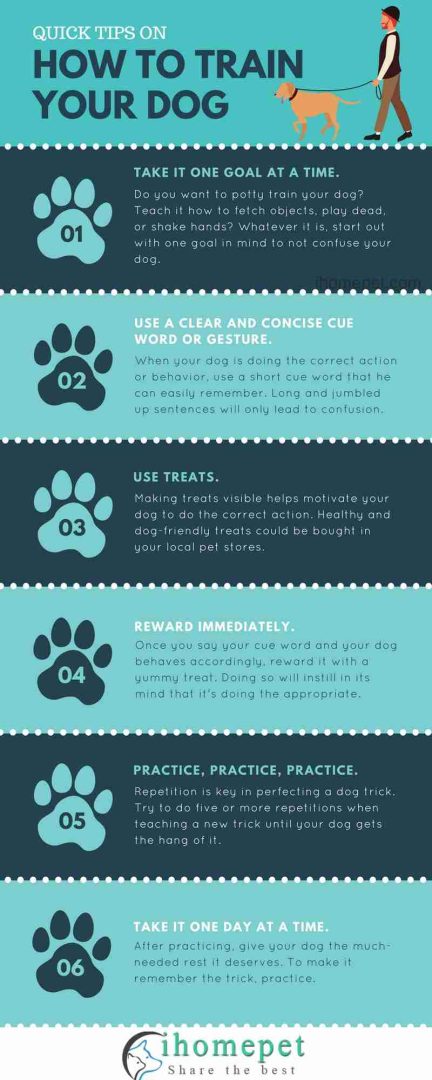how do you train your dog
How to Train Your Dog
Introduction
Dogs are amazing creatures. They can be loyal, loving, and playful companions. But in order to have a happy and well-behaved dog, it's important to train them properly.
Training your dog doesn't have to be difficult. With a little patience and consistency, you can teach your dog basic obedience commands, such as sit, stay, come, and down. You can also teach your dog more advanced tricks, such as shaking hands, rolling over, and playing dead.
In this article, we will discuss the basics of dog training, including how to choose the right training method for your dog, how to set realistic goals, and how to reward and correct your dog's behavior. We will also provide tips on how to deal with common training problems, such as barking, chewing, and jumping.
Choosing the Right Training Method
/Steps-to-train-your-dog-1118273_V3-d54431849ef64dc68e8d25eb07b0c1cc.png)
There are many different training methods available, each with its own advantages and disadvantages. The best way to choose a training method is to consider your dog's individual personality and learning style.
Some of the most popular training methods include:
- Positive reinforcement training. This is a reward-based training method that uses treats, praise, and other positive reinforcement to encourage desired behaviors. Positive reinforcement training is often considered to be the most humane and effective training method.
- Negative reinforcement training. This is a punishment-based training method that uses aversive stimuli, such as a shock collar or a leash correction, to discourage unwanted behaviors. Negative reinforcement training can be effective, but it can also be harmful if it is used too harshly or injudiciously.
- Clicker training. Clicker training is a type of positive reinforcement training that uses a clicker to mark desired behaviors. Clicker training can be very effective for teaching dogs new tricks and behaviors.
- Force-free training. Force-free training is a type of training that does not use any force or coercion. Force-free training is based on the principle of positive reinforcement and relies on the use of rewards, such as treats, praise, and play, to encourage desired behaviors.

Setting Realistic Goals
When you are first starting to train your dog, it's important to set realistic goals. If you set your sights too high, you are likely to get discouraged and give up.
When setting goals, keep the following things in mind:

- Your dog's age and individual learning style.
- The amount of time you have available to train your dog.
- The specific behaviors you want to teach your dog.
For example, if you have a young puppy, you may want to start with basic obedience commands, such as sit, stay, come, and down. As your dog gets older and more experienced, you can start teaching him more advanced tricks and behaviors.
Rewarding and Correcting Your Dog's Behavior

When you are training your dog, it's important to reward and correct his behavior consistently. This will help him to learn what behaviors are expected of him and which behaviors are not.
Rewarding your dog
When your dog behaves the way you want him to, be sure to reward him immediately. Rewards can be anything your dog enjoys, such as treats, praise, or play.

Correcting your dog
If your dog misbehaves, it's important to correct his behavior immediately. However, it's important to do so in a calm and assertive manner. Yelling at your dog or punishing him physically will only make him afraid of you and less likely to cooperate.
Instead, try using the following techniques to correct your dog's behavior:

- Time-out. If your dog is misbehaving, you can put him in a time-out. This means placing him in a quiet room for a few minutes. This will give him time to calm down and think about his behavior.
- Negative reinforcement. This is a punishment-based training method that uses aversive stimuli, such as a shock collar or a leash correction, to discourage unwanted behaviors. Negative reinforcement training can be effective, but it can also be harmful if it is used too harshly or injudiciously.
- Clicker training. Clicker training is a type of positive reinforcement training that uses a clicker to mark desired behaviors. Clicker training can be very effective for teaching dogs new tricks and behaviors.
Dealing with Common Training Problems
All dogs are individuals, and some will be more difficult to train than others. However, there are a few common training problems that most dogs experience at some point. Here are some tips on how to deal with these problems:

- Barking. If your dog barks excessively, there are a few things you
Thank you for exploring our website by how do you train your dog. Your presence fuels our commitment to excellence. Come back for a more enriching experience!
